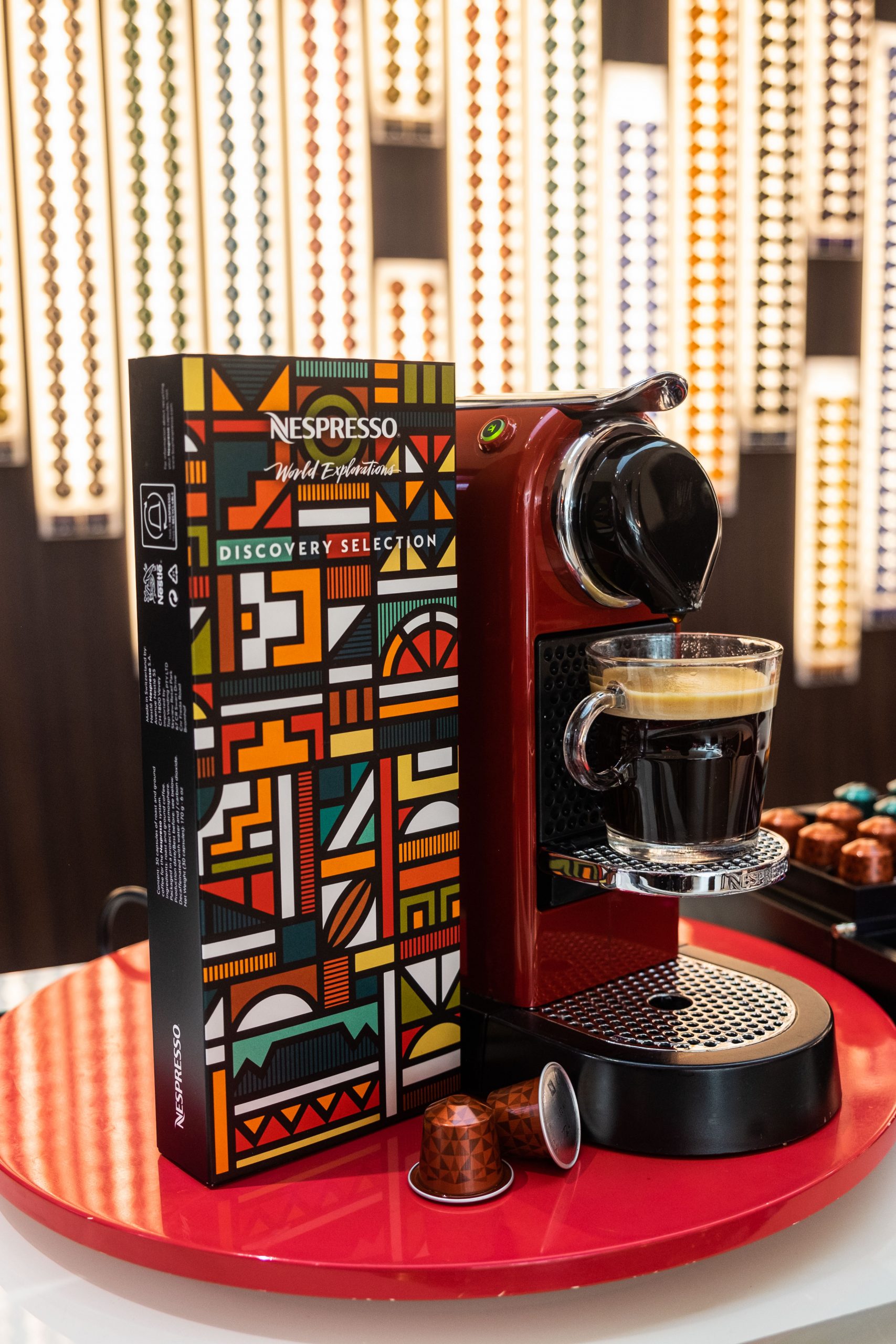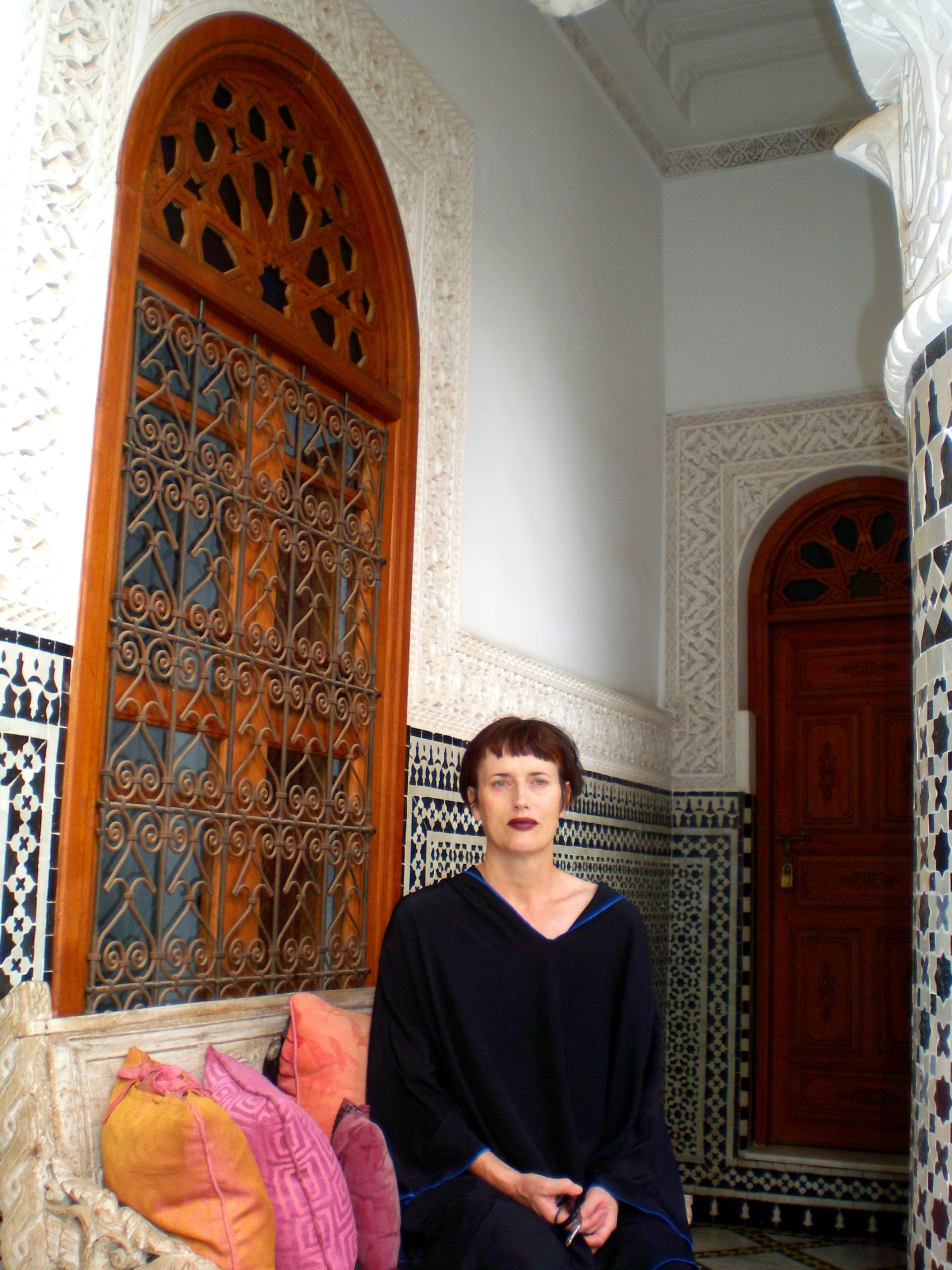In honour of Champagne Day 2024, a cross-cultural exchange took place in the heart of the Champagne region, Épernay. To celebrate the endless creativity in craftsmanship, Moët & Chandon invited some of Africa’s most prominent creative talents to explore the iconic brand’s heritage, artistry, and savoir-faire. The seven creatives included Thebe Magugu, Banke Kuku, Aisha Ayensu, Mahine Sef, Lyra Aoko, Mtani Nyamakababi and Youssra Nichane. Spanning fashion, design, music and photography, each of these talents represents a commitment to African craft and creativity.
For this creative collective, the trip was an opportunity to immerse themselves in the world of Moët & Chandon, a brand that balances both luxury and centuries-old craftsmanship. Already before setting foot onto the estate or sipping on a glass of Champagne, they were struck by the wonder that is Moët & Chandon.
“My first impression of Épernay was one of timeless elegance,” says Mahine Sef, a Cameroonian photographer, videographer, and music producer, who has worked with top Afro-music artists.
“The Moët & Chandon estate, in particular, felt like a place where tradition and innovation harmonise beautifully.” Founder of Tanzanian brand Mtani Bespoke Clothing
Mtani Nyamakababi, echoes this sentiment and says that the Avenue de Champagne, lined with centuries of winemaking history, immediately struck him. “The cellars, where millions of bottles age gracefully, were particularly impressive – miles of tunnels holding the promise of exceptional craftsmanship,” he explains – which he knows firsthand after being taken to explore the 28 km of these remarkable cellars. Thebe Magugu, award-winning South African designer, added “It blows my mind that they have managed to preserve a brand since 1743, and for it to still be even more relevant in 2024 – that takes a level of constant preservation and education.”
The trip also delivered an emotional and cultural exchange, underpinned by the legacy of Moët & Chandon. For Banke, behind the well-established Nigerian brand Banke Kuku Boutique, the experience almost felt surreal. “It’s like the world slowed down once I stepped into the estate,” she said. Aisha Ayensu, founder of Ghanaian fashion house Christie Brown, was similarly in awe of the Château’s stunning architecture and the sense of history radiating from its walls. “The atmosphere felt both luxurious and inviting,” she remarked, immediately connecting with the relationship between tradition and innovation, a theme that defines Moët & Chandon.
Morocco-based Youssra Nichane, founder of Dihyan Jewellery, was deeply inspired by the Memories of Tomorrow exhibition, where signature pieces crafted by the embroidery artisans of atelier Baqué Molinié showcased the rich heritage and savoir-faire of Moët & Chandon. She highlights that exploring the meticulous work of contemporary artisans at the Maison was a standout moment for her, describing the collaboration as “a true reflection of where craftsmanship meets history.” This experience not only deepened her appreciation for the artistry involved but also reinforced the importance of preserving and celebrating traditional techniques in modern design.
Moreover, the creatives had the opportunity to learn from, network and inspire one another. As photographer Lyra Aoko aptly put it. “It was the perfect opportunity to live my best life, validate my art, and mingle with some of the best craftsmen and -women.”
It will come as no surprise then, that the Moët & Chandon Maison made a profound impact on these prolific creatives. Through close encounters with the heritage and artisanship proudly on display, each talent walked away with renewed inspiration for the creative journey and found it shaped their perspectives on craftsmanship, luxury, and craft in some way. For Lyra, what stood out most was the seamless collaboration across the entire brand. “Every detail, from grape selection to the artistry of bottle-making, reflects a shared commitment to excellence,” she says. For Mtani, it was Moët & Chandon’s meticulous attention to detail and dedication to quality, even while producing millions of bottles each year.
“Their strategy has been carefully crafted over centuries to maintain their status as one of the world’s most prestigious Champagne brands,” he noted. “This has inspired me to be more committed to excellence in my craft and create a tradition, which will be maintained and refined over the years to ensure longevity.” On top of collaboration and commitment, Banke reflected on the intentionality behind everything Moët & Chandon does. “Visiting the estate, especially the beautiful Trianon, the Orangerie, and the Château de Saran, made me understand the importance of asking ‘why’ during my creative process,” she said.
For Moët & Chandon, this intentionality undoubtedly comes through in ‘savoir-faire’, or the art of knowing. For a luxury brand of this nature, continued expertise is a cornerstone of legacy.
“Discovering the savoir-faire of Moët & Chandon … made me realise the endless possibilities of craftsmanship,” says Youssra. Aisha adds to this by saying,
“[It] made me rethink how I express luxury in my designs. It’s about capturing that essence of sophistication while staying true to the stories behind each creation,” she continues. Both women were tangibly inspired. Youssra was motivated to create a Moroccan piece inspired by the 3 grape varietals used to craft a bottle of Moët & Chandon Brut Imperial, a design previously unseen in Moroccan jewellery, while Aisha says she’s working with her team at Christie Brown to create a piece that marries traditional Ghanaian techniques with modern savoir-faire.
Thebe also draws parallels between his work as a designer and the artistry behind Moët & Chandon. “It is a meticulous and calculated process, this idea of showing our culture in a respectful way, and I think Moët does the same – to perfect the centuries-old process of creating Moët takes a level of respect, know-how, and talent,” he says. Reflecting on savoir-faire in their own work was not the only common thread here. Another important link was the one between France and Africa and the values these cultures share. Mahine points out the complementary differences between French and African craftsmanship. “Both cultures share a deep respect for tradition and a commitment to excellence,” he explains. “However, the French approach often emphasises refinement and precision, while African craftsmanship celebrates boldness and storytelling.” Lyra seconds this, saying these similarities are rooted in a sense of community, a shared passion for food, and the pride both cultures take in their work. “Both are loud and proud in expressing their heritage through art. However, the differences lie in the approach,” she explains.
“The French have centuries of experience with a more structured system, which lends a refined touch to their craftsmanship. In contrast, African artisans often work with limited resources, which pushes their creativity to new heights and tends to be more vibrant and colourful.” Mtani adds to this by remarking on the way French craft, though steeped in tradition, remains adaptable. “Witnessing the meticulous care that goes into creating Champagne inspired a similar level of precision and patience in my own crafting process. Now, I see my craft not just as a means to an end but as a form of artistry requiring the same careful cultivation and respect for materials,” he said.
A trip of this scale is difficult to sum up. It highlighted the shared values of tradition, community, and excellence across both African and French cultures but also demonstrated how cross-cultural interactions can inspire new perspectives. As Mahine put it, “One aspect that stood out was the emphasis on tradition, yet with a constant drive for innovation.” This respect for the past, while embracing the future is part of Moët & Chandon’s success, so too is their willingness to innovate and collaborate. Thebe says balancing tradition with modernity is vital for keeping cultural elements relevant to younger generations. “I always say: one preserves culture and history by injecting it with innovation and modernity, otherwise it will be left behind, especially younger generations, who are essentially the custodians of the future,” he explains.
In light of celebrating the upcoming Champagne Day across 8 countries in Africa, this cross-cultural exchange highlighted Moët & Chandon’s rich heritage while fostering connections between African and French craftsmanship.
About Moët & Chandon
Moët & Chandon was founded in 1743 by Claude Moët and elevated to international renown by his descendant, Jean-Rémy Moët, who dreamt of “sharing the effervescence of Champagne with the world.” From royal court to red carpet, Studio 54 to Grand Slams, Moët & Chandon has been bringing people together around thrilling, extraordinary moments. With the largest, most diverse vineyards in the region, the House offers a universal & versatile portfolio of champagnes for every occasion and palate. Easy to love, each creation in white and rosé – from the iconic Moët Impérial to the refined Grand Vintage Collection, from the refreshing Moët Ice Impérial to the gentle Nectar Impérial – dazzles and delights with a broad spectrum of flavours and aromas to capture the astonishing breadth of its terroir. Through Natura Nostra, Moët & Chandon’s long-term sustainability program, the House works to protect biodiversity in the region and, since 2009, Moët & Chandon also supports philanthropic initiatives through Toast for a Cause. For nearly three centuries, Moët & Chandon has been the champagne of choice to mark both significant events in history and personal celebrations, enhancing each toast with the spark of effervescence.






























